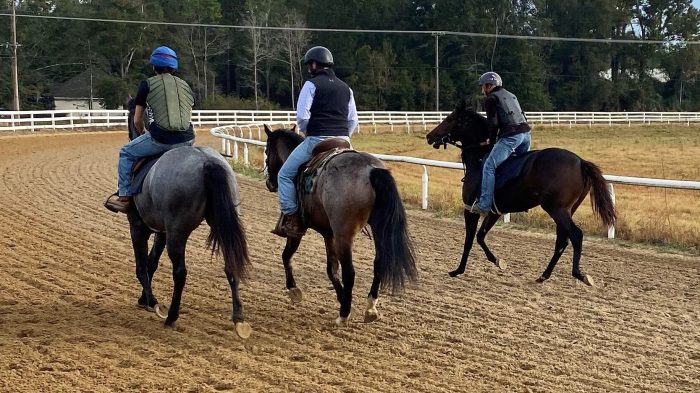
Exploring the world of equestrianism, Western vs English riding presents a fascinating contrast between two distinct styles that have captured the hearts of horse enthusiasts worldwide. Each discipline showcases unique techniques, equipment, and cultural roots that reflect the lifestyles and histories of their practitioners.
The primary differences lie not just in the saddles and bridles used, but also in the riding techniques and the competitive events that define each style. Western riding, often associated with cattle herding and ranching, emphasizes a relaxed posture and practical skills. In contrast, English riding focuses on precision, form, and various competitive disciplines. Understanding these nuances can enhance one’s appreciation of both styles, whether you’re a seasoned rider or a curious onlooker.
Differences Between Western and English Riding Styles
Western and English riding represent two distinct equestrian disciplines, each with unique characteristics shaped by their historical contexts, equipment, and riding techniques. Understanding these differences not only enriches the riding experience but also highlights the cultural significance of each style.
Equipment Used in Western vs English Riding
The equipment differences between Western and English riding are notable and play a critical role in each discipline’s practice. Western riders typically utilize a saddle designed for comfort during long hours in the saddle, featuring a horn for securing ropes and a larger seat for stability. In contrast, English riding equipment is more streamlined, with a flatter saddle that allows for greater contact with the horse.
- Western Saddle: Characterized by its larger size and a prominent horn, the Western saddle is built for comfort and security during long rides.
- English Saddle: More compact and lightweight, the English saddle allows for a closer connection to the horse, facilitating nuanced communication between horse and rider.
- Bridles: Western bridles often lack a noseband and utilize a curb bit, while English bridles typically feature a more refined design with a snaffle bit.
- Stirrups: Western stirrups are broader and heavier, designed to provide stability. English stirrups are lighter and more streamlined, aiding in agility.
Riding Techniques and Styles Unique to Each Discipline
The riding techniques employed in Western and English disciplines reflect their respective training philosophies and intended use. Western riding emphasizes relaxed, low-pressure cues, promoting a calm interaction with the horse. Riders often use one-handed rein control to manage their horses while performing tasks such as roping cattle.Conversely, English riding focuses on precision and control, with riders often using two hands to guide their horse.
This technique is particularly important in disciplines like show jumping and dressage, where accuracy in movements is essential.
Western riding promotes a relaxed interaction with the horse, while English riding emphasizes precision and control.
Historical Origins and Cultural Significance
The origins of Western and English riding are rooted in different cultural backgrounds and purposes. Western riding evolved from the cattle-ranching practices of the American West, with its techniques and equipment designed for herding and long-distance travel. This riding style embodies the spirit of ranch life and has significant cultural ties to the American cowboy tradition.In contrast, English riding has its roots in European aristocracy, where it developed for military purposes and leisure activities.
It is associated with various formal disciplines, such as dressage, show jumping, and eventing, reflecting a long-standing tradition of horsemanship and training. The cultural significance of each style is profound, as Western riding often represents freedom, adventure, and the rugged lifestyle of the American frontier, while English riding is linked to elegance, precision, and tradition in equestrian sports.
Equestrian Sports and Riding Disciplines
Equestrian sports encompass a wide range of activities that involve horse riding, training, and competition. This vibrant field includes various riding disciplines, each with its own unique style, techniques, and competitive events. Understanding these disciplines is essential for both riders and enthusiasts to appreciate the diverse skills and training involved in the sport.Different riding disciplines under the equestrian sport umbrella highlight the various ways riders can engage with horses.
Each discipline emphasizes specific skills, techniques, and even breed preferences, contributing to the overall richness of equestrian culture.
Riding Disciplines Overview
Equestrian sports comprise a variety of disciplines, each with distinctive characteristics and requirements. Understanding these can help riders choose the best fit for their interests and skills. Below are some major riding disciplines:
- Dressage
- Jumping
- Eventing
- Western Pleasure
- Barrel Racing
- Reining
- Show Jumping
- Hunter
- Endurance Riding
Training methodologies and preparation for competitions play a crucial role in both Western and English riding styles. Each discipline requires tailored approaches, combining physical conditioning, technical skills, and mental preparation.
Competitive Events for Western and English Riders
The competitive landscape for both Western and English riders is rich with events that test a rider’s skill, partnership with their horse, and adherence to discipline standards. Key events include:
- Western Events:
- Rodeo Events (e.g., Steer Wrestling, Team Roping)
- Barrel Racing
- Reining Competitions
- Western Pleasure Classes
- English Events:
- Dressage Tests
- Show Jumping Rounds
- Eventing Cross-Country
- Hunter Show Classes
Training methods vary significantly between disciplines. In Western riding, training often emphasizes relaxed, responsive communication between horse and rider, focusing on versatility and control. English riding, on the other hand, emphasizes precision and technique, often incorporating flatwork, jumping drills, and conditioning exercises.
Training Methodologies and Preparation for Competitions
Preparing for competitive events requires an integrated approach that includes physical training for both horse and rider, skill development, and mental readiness. Training strategies often consist of:
- Establishing a consistent practice routine
- Engaging in fitness training programs for horses and riders
- Focusing on specific skills relevant to the chosen discipline
- Participating in mock competitions to build confidence
It’s essential to tailor the training regimen to the specific requirements of the discipline. For instance, a reining horse may require extensive training in spins and stops, while a dressage horse benefits from exercises that enhance balance and flexibility.Overall, the diversity of equestrian sports and riding disciplines provides a rich tapestry for riders of all levels to explore, compete, and enjoy the equestrian lifestyle.
Legal and Safety Considerations in Riding

Riding horses, whether in Western or English disciplines, comes with specific legal and safety considerations that riders must be aware of. Understanding these regulations ensures not only compliance with local laws but also the safety of both the rider and the horse. Riders must familiarize themselves with the different laws governing their chosen discipline, as well as the necessary safety protocols to follow while riding.
Laws and Regulations in Riding Disciplines
Each riding discipline has its own set of rules and regulations that reflect the unique nature of the sport. It is crucial for riders to be aware of these legal frameworks to avoid penalties and ensure a safe riding environment.
- Licensing and Certification: Many regions require riders to possess a valid license or certification, especially in competitive scenarios. This often involves passing specific tests related to riding skills and safety knowledge.
- Animal Welfare Laws: Riders must adhere to local and national animal welfare laws, which set standards for the care and treatment of horses. These laws ensure that horses are not subjected to unnecessary pain or distress.
- Event Regulations: Each equestrian event has its own rules, which can include specific requirements for equipment, attire, and horse health checks. Compliance is necessary to participate and compete.
Safety Protocols for Riders
Adhering to safety protocols while riding is essential to minimize risks and injuries. Both Western and English riders should follow these guidelines to ensure a safer riding experience.
- Personal Protective Equipment: Wearing appropriate gear such as helmets, boots, and gloves significantly reduces the risk of injury. Helmets, in particular, are recommended to prevent head injuries in case of falls.
- Pre-Ride Checks: Conducting a thorough check of the horse’s tack and equipment before riding helps to identify any potential issues that could lead to accidents.
- Know Your Horse: Understanding the temperament and behavior of your horse enables riders to anticipate reactions and manage situations more effectively, enhancing overall safety.
Insurance Considerations for Equestrians
Equestrians should consider insurance options to protect themselves against various risks associated with riding and competing. Insurance can offer peace of mind and financial protection in the event of accidents or injuries.
- Liability Insurance: This type of insurance is essential for riders to cover costs related to injuries or damages caused by the horse to others, including property damage and bodily injury claims.
- Medical Insurance: Having a robust medical insurance plan is vital for riders, as equestrian activities come with inherent risks of injury. This ensures that riders receive the necessary medical care without financial burden.
- Equine Insurance: This protects the rider’s investment in their horse, covering costs related to theft, injury, or death of the horse. It’s particularly important for those involved in competition or breeding.
Final Wrap-Up

In conclusion, the discussion of Western vs English riding highlights the rich tapestry of equestrian culture, showcasing not only the differences in style and technique but also the shared passion for horses. Whether one prefers the relaxed charm of Western riding or the disciplined elegance of English riding, both styles offer unique experiences and challenges that resonate with riders around the globe.
Popular Questions
What is the main difference in saddles used in Western vs English riding?
Western saddles are larger and designed for comfort during long rides, while English saddles are streamlined for agility and close contact with the horse.
Can you compete in both Western and English disciplines?
Yes, many riders choose to compete in both disciplines, as skills from one can often benefit the other.
What are some common safety gear used in both riding styles?
Both Western and English riders typically wear helmets, boots, and appropriate riding attire, though the specifics may vary between styles.
Are there specific insurance needs for riders in each discipline?
Yes, riders may require different types of insurance based on their discipline, especially if competing in events that may have higher risks involved.
How do training methods differ between Western and English riding?
Western training often focuses on practicality and responsiveness, while English training emphasizes technique, posture, and discipline.





